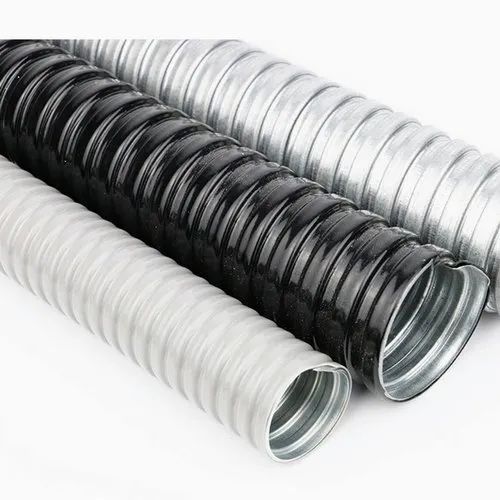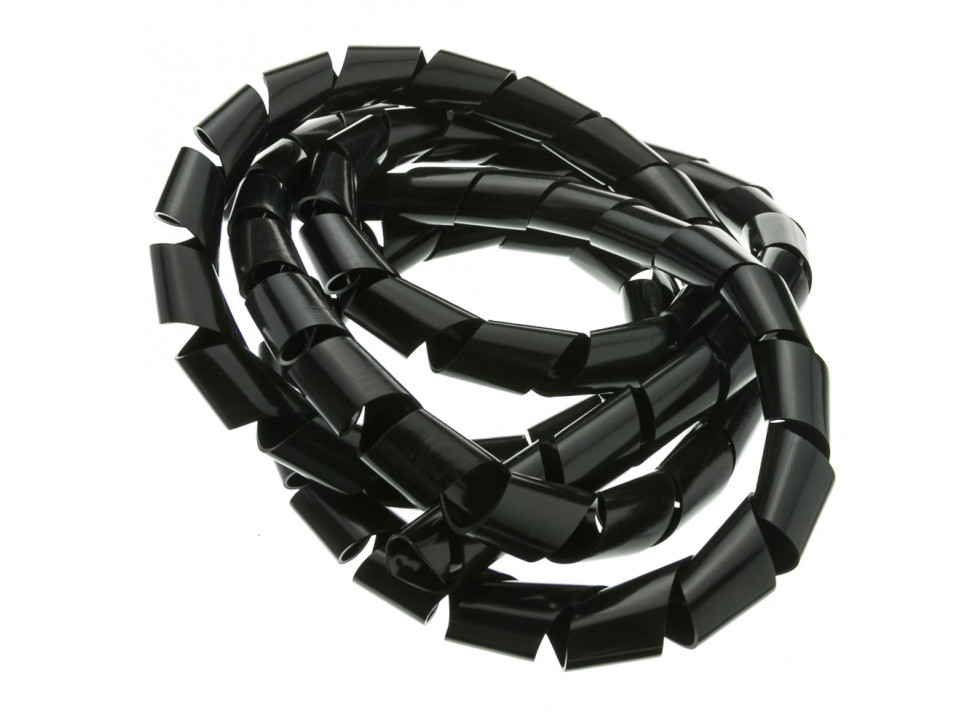Where are the metal and plastic hoses in wire protection tubes commonly used in electrical systems?
Where Are the Metal and Plastic Hoses in Wire Protection Tubes Commonly Used?
Where are the metal and plastic hoses in wire protection tubes commonly used? These hoses help protect wires and cables from mechanical damage, such as abrasion and bending.
Various types of conduits provide cable protection, including EMT (electrical metallic tubing), FMC (flexible metal conduit), ENT (electrical nonmetallic tubing), braided sleeving and spiral wire wrap. These hoses offer protection against dirt and moisture, and are fire-retardant.
EMT (Electrical Metallic Tubing)
EMT (Electrical Metallic Tubing) is a rigid metal conduit that serves one simple purpose. It routes wires and cables throughout homes and industrial buildings while protecting them from physical damage, chemicals, water, and vibration.
EMT is a great choice for running wires through basements, attics, and garages; it’s lightweight, affordable, and easy to install. It can also be bent and shaped to fit around awkward corners.
The best EMT pipes are made from aluminum, which makes them one of the lightest materials on the market. It also has excellent corrosion resistance and a high resistance to oil and water.
Another important aspect of EMT is that it has a low bending radii, making it suitable for going through walls or under concrete. However, it should not be bent more than 360 degrees or it can cause torsion and decrease the service life of the hose.
While they can be a bit more costly than plastic, metal tubing is usually the better option for long-term use. It can handle stress and heat more effectively, it will not rust, and it can be manufactured to look more appealing.
Regardless of the material, you should follow all electrical codes when working with it. It should be installed within a building, so it cannot be subject to physical damage, and it should not be in an area where vehicles or corrosive fumes will affect the piping.
In addition to protecting wires, it can help with grounding. A bare copper ground wire is typically required, but green-insulated ground wire can be used where local code allows it.
It’s also a good idea to make sure that the metal conduit joints are strong and tight, so the metal doesn’t break when it’s not in use. This prevents grounding issues and reduces the risk of shocks.
A final tip is that you should use a metal conduit bender to correct any improper bends in your system. With any other type of conduit, you should follow the 10-foot rule, which means that you should secure the pipe every 10 feet. This is especially helpful if you have to reroute your wiring or adjust the circuit.
FMC (Flexible Metal Conduit)
Flexible metal conduit (FMC) is a spiral-wound ribbed strip of aluminum or steel, which can be bent and passed through walls easily. It's used primarily in dry areas where metallic strength to protect conductors is necessary, but EMT or other non-flexible conduit would be impractical.
It's also used in places where rigid conduit would be difficult to bend and offset. FMC brass bush can be used for light fixture connections, above suspended ceilings and in many other applications where bends or offsets are needed.
In addition, a type of FMC called liquid tight flexible metal conduit is available with a plastic coating that makes it watertight. This type of FMC is commonly found in HVAC areas, water treatment systems and other locations where liquid-tight fittings are required.
Another form of flexible metal conduit is intermediate metal conduit, or IMC. It is thinner and lighter than rigid conduit, but it can still offer a level of protection against corrosion and other stresses.
IMC is often installed in residential and commercial buildings. It's a good choice for new construction because it can be installed and reinstalled quickly, reducing installation time and cost.
AFC Cable Systems offers IMC conduit in both full and reduced wall constructions to meet the UL safety standards for wiring systems. It's a great choice for electrical power, communication cables, motor leads and listed assemblies.
Its helical coiling and self-interlocking design make it durable and reliable, while its spiral construction allows it to snake through walls and other structures. It is commonly used to house wiring for pumps, motors and manufacturing equipment.
Unlike most other types of conduit, FMC can be buried or embedded in concrete. However, it's important to note that it can be prone to moisture and should have drains at the lowest points of each run.
Conduit systems are a crucial part of any wiring system, and they play a vital role in keeping wires protected from damage. It's important to choose the correct type for your specific needs, so you can avoid costly repairs or even a fire in your home.

Spiral Wire Wrap
Where are the metal and plastic hoses in wire protection tubes commonly use? They are most often found in the automotive industry where they are used to bundle hydraulic hoses for a neat appearance while also protecting those hoses from punctures and abrasions.
These hoses are typically wrapped in a spirally cut tubing called Spiral Wire Wrap or Spiral Cable Wrap. This type of wrap is flexible and convenient to install. It is available in a wide variety of lengths, diameters and thicknesses to suit your needs.
Spiral wire wrap is made from a number of different synthetic polymers. These include polyethylene, fire-resistant polyethylene, nylon and PTFE (polytetrafluoroethylene).
The primary synthetic polymers used to make spiral wire wrap are polyethylene, which is known for its abrasion resistance. It also has the Electrical Conduit widest operating temperature range of any material and is chemically inert, non-flammable and UL VW-1 rated.
Another popular choice is PTFE (polytetrafluoroethylene) or Teflon, which is known for its excellent abrasion resistance as well as high temperature. It is a great option for medical devices or products that are placed in harsh environments.
In addition to abrasion resistance, PTFE spiral wrap is also resistant to chemicals and electrical elements. It is commonly used for a variety of applications, including electronic wire harnesses and electrical wiring systems.
It is also commonly used for cable bundling and other applications where it is important to keep individual cables organised and protected from abrasions. It is easy to apply and can be easily removed without the need for tools, allowing for changes or repairs.
Unlike most other types of tube, HelaWrap is applied with an applicator tool. This is a time-saving solution and allows for more rapid installation, making it a popular choice among electricians.
Using HelaWrap is quick and easy, but it does require a little bit of preparation and planning. First, decide on the diameter of your bundle, and then choose the length of the spiral tube that you will need. You can then start wrapping the HelaWrap around your bundle by starting at one end and gradually moving it to the other. You can then branch off individual cables as required. This can be done at the appropriate places during winding or later when you want to re-route them.

Brass Nozzles
Brass is a common material for nozzles because it has excellent heat transfer, which allows molten plastic to extrude evenly and consistently from the nozzle. They are also less prone to sticking to the nozzle walls, which prevents contaminating the print with lead (which is often found in some filaments).
However, brass nozzles do have some limitations, particularly when using abrasive materials. These terminal box include composites, such as glass or carbon fiber filaments, as well as particles, such as ceramic and metallic particles. These can cause abrasion on the nozzle wall, which is why it is important to use a different nozzle for each material.
There are several types of nozzles available for 3D printers, ranging from general purpose brass nozzles to specialty abrasion-resistant stainless steel and copper nozzles. All nozzles have their own strengths and weaknesses, so choosing the right one for your printing needs can make all the difference.
For example, brass is a good choice for general-purpose filaments such as PLA and ABS. It offers great thermal conductivity and is relatively durable with non-abrasive materials.
Another popular nozzle material is steel, which is more resistant to wear than brass. It is slightly less heat-conductive than brass, which can help print a wider range of filaments.
Some nozzles are coated, which helps to increase their resistance to abrasion. These nozzles are usually more expensive than standard brass nozzles and they may not last as long.
If you use abrasive materials frequently, we recommend replacing your nozzles regularly. This will ensure that they are not worn out and become imprecise.
Alternatively, you can try a nozzle with a nickel coating, which provides a high degree of resistance to abrasion. This type of nozzle is typically more expensive than standard brass nozzles, but it can be worth the extra cost.
The Original Prusa i3 uses the E3D V6 Hotend, which is compatible with many different types of nozzles. The stock nozzle that accompanies the printer is a 0.4 mm brass nozzle, but other types and diameters are also available. If you are unsure about the nozzle type and diameter you need, consult PrusaSlicer’s Filament Guide or 3DVERKSTAN’s website for guidance.
Comments
Post a Comment